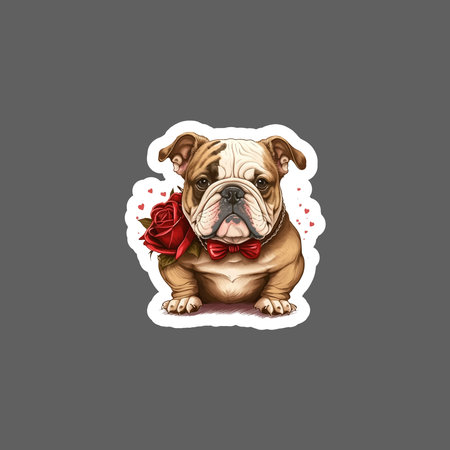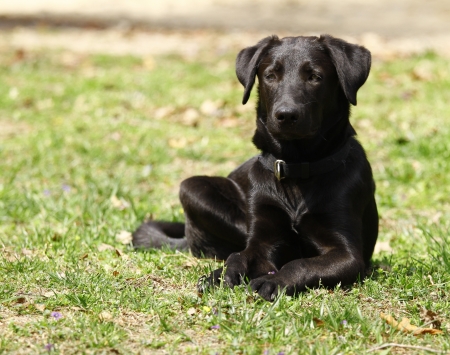Understanding Dog Adoption in the UK
Dog adoption in the UK is a compassionate and responsible way to welcome a new four-legged companion into your home. The process may vary depending on where you choose to adopt, with key differences between rescues, rehoming centres, and charitable organisations. Each option has its own procedures, expectations, and benefits, shaped by both legal requirements and the unique culture of animal welfare in Britain.
Types of Dog Adoption Organisations
| Organisation Type | Description | Typical Process |
|---|---|---|
| Rescue Centres | Often run by volunteers or small charities; focus on rescuing dogs from difficult situations. | Application, home check, meet-and-greet, adoption fee. |
| Rehoming Centres | Larger facilities (e.g., Battersea Dogs & Cats Home); structured processes and support after adoption. | Detailed application, interview, compatibility matching, post-adoption support. |
| Charities | National or local organisations (e.g., Dogs Trust, RSPCA); may offer fostering options first. | Assessment of suitability, education on care responsibilities, follow-up visits. |
Legal Considerations
The UK has strict laws regarding dog welfare under the Animal Welfare Act 2006. Adopters must ensure they can provide for their dogs needs—food, shelter, exercise, and medical care. Many organisations will conduct home checks to verify that potential adopters understand these obligations. Microchipping is a legal requirement for all dogs in the UK, and most adoption centres will ensure this is done before rehoming.
Cultural Insights
Adopting a dog in the UK is often seen as a lifelong commitment. British culture emphasises responsible ownership, including regular veterinary check-ups and pet insurance. Many communities value adopting over buying from breeders or pet shops as it supports animal welfare efforts and helps reduce the number of unwanted pets. It’s common for adopters to be asked about their lifestyle, work schedule, and experience with dogs to ensure the best match for both the family and the pet.
Key Takeaways
- The UK offers various dog adoption routes: rescues, rehoming centres, and charities.
- Legal requirements include microchipping and adherence to animal welfare standards.
- Cultural norms favour responsible ownership and lifelong commitment to adopted dogs.
2. Choosing the Right Dog for Your Lifestyle
Adopting a dog is a long-term commitment, and ensuring a good match between your new companion and your lifestyle is essential for a happy, healthy relationship. Here’s how to assess your family situation, home environment, and daily routines to choose the perfect dog in the UK.
Assessing Your Family and Home Environment
- Family Members: Consider the age and temperament of everyone at home. Young children may do better with gentle, patient breeds, while older children can often handle more energetic dogs.
- Other Pets: If you already have pets, think about their compatibility with a new dog. Some breeds are more sociable than others.
- Home Size: A spacious house with a garden suits larger or more active dogs, while flats or terraced homes may be better for small or less energetic breeds.
Lifestyle and Activity Level
| Lifestyle | Recommended Dog Type | Examples of Suitable Breeds |
|---|---|---|
| Active/Outdoor Enthusiast | High-energy, loves exercise | Labrador Retriever, Border Collie, Springer Spaniel |
| Busy/Working Full-Time | Independent, low-maintenance | Greyhound, Basset Hound, Whippet |
| Family with Young Children | Patient, gentle, sturdy | Cavalier King Charles Spaniel, Beagle, Staffordshire Bull Terrier |
| Elderly or Limited Mobility | Calm, small size, low exercise needs | Pug, Shih Tzu, French Bulldog |
Breed vs. Mixed Breed Considerations
- Purebred Dogs: You may have an idea of temperament and energy levels based on breed standards but some breeds are prone to specific health issues.
- Mixed Breeds: Often healthier due to genetic diversity; personalities can vary but rescue centres will usually provide temperament assessments.
- Banned Breeds: Be aware of the UK’s Dangerous Dogs Act which restricts certain types such as Pit Bull Terriers.
Puppy or Adult Dog?
- Puppies: Require significant training and time investment but can adapt well to your household from a young age.
- Adult Dogs: Often house-trained with established personalities; staff at UK rescues can advise on their suitability for your lifestyle.
- Seniors: Ideal for quieter homes and those looking to offer a loving retirement to an older pet.
Your Next Steps
Visit local rescue centres such as Battersea Dogs & Cats Home or Dogs Trust to discuss your options with experienced staff. They can help match you with dogs that fit your unique circumstances. Remember: adopting the right dog means considering both your needs and theirs for a truly rewarding partnership.

3. The Adoption Process: Step-by-Step
Adopting a dog in the UK is a structured process designed to ensure the best outcome for both you and your future furry friend. Understanding each stage can help reduce anxiety and prepare you for what lies ahead. Here’s a detailed walkthrough of the typical adoption journey:
Initial Enquiry
The first step often involves researching reputable rescue centres or charities, such as the RSPCA, Dogs Trust, or Battersea Dogs & Cats Home. Once youve identified a suitable organisation, you usually complete an online enquiry form or make contact by phone to express your interest in adoption.
Key Information Required
| Information Needed | Purpose |
|---|---|
| Personal details (name, address, contact) | To establish communication and location suitability |
| Experience with dogs | To match you with an appropriate dog |
| Lifestyle and work schedule | To assess your availability and suitability as an owner |
| Home environment (garden, other pets) | To ensure safe and secure living arrangements |
Matching & Meeting Potential Dogs
The rescue centre will review your enquiry and may suggest dogs that fit your preferences and circumstances. You’ll typically have the chance to meet these dogs at the centre. This stage allows both parties to interact and assess compatibility.
What to Expect During Meet-and-Greet Sessions:
- Observation of your interaction with the dog by staff or volunteers
- An opportunity to ask questions about the dogs health, history, and temperament
- A chance for the dog to become familiar with you in a controlled environment
- Guidance on how to handle nervous or shy dogs if applicable
Home Check & Assessment
If a suitable match is found, most organisations will arrange a home visit or virtual home check. This ensures your home environment meets their rehoming criteria—such as secure fencing, safe spaces, and provisions for exercise.
Common Home Check Criteria:
- Adequate space indoors and outdoors for the dog’s needs
- No hazards like toxic plants or open ponds in the garden area
- A secure boundary to prevent escapes
- A calm environment free from excessive noise or stressors
- If renting, landlord permission for pets is required
Final Paperwork & Adoption Fee
Once approved, youll be asked to complete an adoption agreement. This contract outlines your responsibilities as an adopter and may include ongoing support or trial periods. There is usually an adoption fee which covers vaccinations, microchipping, neutering, and initial veterinary checks.
| Typical Adoption Fees (2024) | Whats Included? |
|---|---|
| £150-£250 per dog* | Vaccinations, microchip, neutering/spaying, health check, starter pack (lead/collar/food) |
*Fees may vary depending on age and breed.
Bringing Your Dog Home & Ongoing Support
After completing all formalities, you can welcome your new companion home. Many UK organisations offer post-adoption support through follow-up calls, advice lines, or training resources to help ease the transition for both you and your dog.
This comprehensive process not only helps safeguard animal welfare but also sets up adopters for a successful, rewarding relationship with their new pet.
4. Preparing Your Home for a New Dog
Welcoming a new dog into your home is an exciting time, but it requires thoughtful preparation to ensure both you and your furry companion settle in smoothly. Here’s some practical advice on creating a safe, welcoming environment, sourcing essential supplies, and making sure everyone in the household is ready for your new arrival.
Dog-Proofing Your Home
Start by assessing your home from a dog’s perspective. Remove anything that could be harmful or tempting to chew, such as electrical wires, shoes, or children’s toys. Secure bins with lids and keep household cleaners and medications out of reach. If you have a garden, check fences for any gaps or weak spots – dogs are notorious escape artists!
Checklist: Dog-Proofing Essentials
| Area | What to Check | Action Needed |
|---|---|---|
| Living Room | Cables, small items, houseplants | Tidy away and secure dangerous objects |
| Kitchen | Food storage, bins, cleaning products | Store food securely; use pet-proof bins; lock away chemicals |
| Garden | Fencing, gates, toxic plants | Repair gaps; remove harmful plants like foxglove or daffodils |
| Bedrooms/Bathrooms | Laundry, toiletries, medicines | Keep doors closed; store items high up or locked away |
Sourcing Essential Supplies in the UK
You’ll want to have all the basics ready before your dog arrives. Many UK pet shops (like Pets at Home) and online retailers offer home delivery if you prefer shopping from the sofa. Here’s what you’ll need:
- Food and Water Bowls: Sturdy, easy to clean – stainless steel is popular.
- Bedding: Comfortable and washable; consider a bed suited to your dog’s size.
- Toys: Chew toys, balls, and interactive games keep dogs stimulated.
- Lead & Collar (or Harness): With ID tag engraved with your surname and address (a legal requirement in the UK).
- Poo Bags: Biodegradable options are widely available and eco-friendly.
- DOG FOOD: Consult with the rescue centre about what your new dog has been eating to avoid tummy upsets.
- Grooming Supplies: Brushes suitable for their coat type, dog-safe shampoo.
- Crate or Baby Gate: Useful for training and creating a safe space.
Preparing Your Family and Household Members
If you live with others—family, flatmates or even frequent visitors—it’s important everyone understands how to interact with your new pet. Discuss house rules about feeding times, where the dog can go in the house, and who will take responsibility for walks or playtime. For homes with children, teach them how to approach dogs calmly and respectfully. A consistent routine helps your new dog feel secure as they settle in.
A Final Note on Settling In
The first few days can be overwhelming for any rescue dog. Set up a quiet area where they can retreat if it all feels too much. Take things slowly—patience and positive reinforcement will help your new companion adjust to life in their forever home. Remember: every dog is different, so be flexible as you learn what works best together.
5. Common Challenges and How to Overcome Them
Adopting a dog in the UK is an exciting and rewarding journey, but it’s important to be prepared for some common challenges that new owners may face. Understanding these hurdles and how to address them responsibly ensures a smoother transition for both you and your new companion.
Settling In: Helping Your Dog Feel at Home
Many adopted dogs may feel anxious or overwhelmed when first arriving in their new environment. It’s perfectly normal for your dog to take time to adjust. Provide a quiet, comfortable space, maintain a consistent routine, and allow your pet to explore at their own pace. Patience is key—avoid overwhelming them with too many new experiences all at once.
Top Tips for Settling In
| Challenge | Solution |
|---|---|
| Nervousness or Hiding | Create a safe haven with familiar bedding and toys; limit visitors initially. |
| Night-time Whining | Keep your dog’s bed near yours for reassurance; gradually move it to its permanent spot. |
Training: Laying the Foundation for Good Behaviour
Training is essential for helping your dog adapt to their new life and understand what’s expected of them. Use positive reinforcement techniques—such as treats, praise, and play—to encourage desired behaviours. Remember, patience and consistency are vital, especially if your dog has had little previous training or has picked up unwanted habits.
Basic Training Areas
| Training Focus | Expert Tip |
|---|---|
| House Training | Take your dog out regularly, especially after meals; reward successful toilet trips outside. |
| Socialisation | Gradually introduce your dog to new people, pets, and environments; keep experiences positive. |
Healthcare: Keeping Your Dog Healthy and Happy
The transition period is also the ideal time to establish good healthcare routines. Register with a local veterinary practice, arrange for an initial check-up, and discuss vaccinations, microchipping (a legal requirement in the UK), worming, flea control, and diet. Don’t forget about dental care and regular grooming tailored to your dog’s breed.
Essential Healthcare Checklist
| Healthcare Task | Recommended Action |
|---|---|
| Vaccinations & Microchipping | Ensure all are up-to-date; register microchip details with the UK database. |
| Deworming & Flea Treatment | Follow your vet’s advice on frequency; monitor for signs of parasites. |
If You Need Extra Support
If you encounter persistent behavioural or health issues, don’t hesitate to seek guidance from professionals such as vets or qualified dog trainers who are familiar with UK standards of welfare. Many rescue centres also offer post-adoption support services—take advantage of these resources whenever needed. With the right approach, most challenges can be overcome, paving the way for a happy life together.
6. Essential Resources and Support in the UK
Adopting a dog is an exciting journey, but it’s important to know where to turn for trusted support and guidance as a new pet owner in the UK. Here’s your essential guide to reputable resources that can help you provide the very best care for your new companion.
Veterinary Services
Your dog’s health is paramount, so registering with a local vet should be a top priority. The Royal College of Veterinary Surgeons (RCVS) offers a searchable directory of registered veterinary practices across the UK. Many vets also offer puppy and dog health clinics to get your pet started on the right paw.
Professional Dog Trainers and Behaviourists
Proper training ensures a happy relationship between you and your dog. Look for trainers who are members of the Association of Pet Dog Trainers UK (APDT) or accredited by the Animal Behaviour and Training Council (ABTC). These organisations maintain high standards of practice and ethical care.
Pet Insurance Providers
Pet insurance gives peace of mind by helping cover unexpected veterinary costs. Here’s a comparison of some well-known UK providers:
| Provider | Key Features |
|---|---|
| Petplan | Comprehensive cover, lifetime policies, quick claims process |
| Animal Friends | Affordable plans, supports animal charities, multi-pet discount |
| Direct Line | No upper age limit, 24/7 vet advice line included |
Community Support Networks
Connecting with other dog owners can be invaluable. Local Facebook groups, breed clubs, and community events are great ways to share experiences and advice. The Kennel Club offers listings of regional clubs and events across the UK, while Meetup hosts regular dog walking groups in many towns and cities.
Useful Helplines and Online Resources
| Organisation | Contact / Link |
|---|---|
| Battersea Dogs & Cats Home Advice Line | 0300 323 1216 / Pet Advice Hub |
| PDSA Vet Care Advice Line | 0800 731 2502 / PDSA Advice Portal |
Your Next Steps as a Dog Owner
The right support network makes all the difference in your adoption journey. By tapping into these trusted UK-based resources, you’ll feel confident navigating challenges and ensuring your new canine friend thrives in their forever home.


